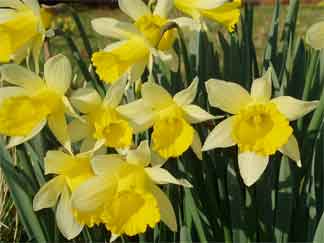January is the month to bring in the first pots of bulbs planted last October and November for forcing. The pots should be completely full of roots and ready for top growth.
The plants will all have white shoots showing and as soon as they are placed under favorable conditions, growth will be rapid. Blooms normally appear in about two weeks.
Daffodils and tulips make very welcome displays on cold January days. For pots of bulbs that are left in storage for later bloom, be sure to check for additional water. All forced plants are heavy feeders, so one application of liquid food will speed up the growth and improve the quality of the flowers.

This is also a good time to repot regular house plants and start them growing actively for spring. Either divide and repot completely, or remove about half of the soil and refill the pot with fresh soil. This should be true for ferns, begonias and geraniums. A south or east window gives more light for the average house plant; African violets prefer north light.
Planting
There are usually some days this month when transplanting of deciduous trees and shrubs can be done. Prune the top back one-third to restore the balance between top growth and root development. Prune away broken roots or branches as they will only be a burden to the plant. Plant flowering shrubs to give a succession of color throughout the year.
The winter flowering jasmine is the first to bloom, followed closely by the flowering quince and forsythia. As these fade, the various spireas come out with the fruit trees and ornamental flowering fruits – the peach and the almond. The dogwood and red bud put their gaudy displays forth next.
Among the most dramatic of the plants that bloom before their leaves are formed are the deciduous magnolias. By May and early June the lilacs, deutzias, viburnums and azaleas are in full bloom. For summer and fall there are the mimosas, crape-myrtles and buddleias. All of these can be planted during January, as they are dormant.
